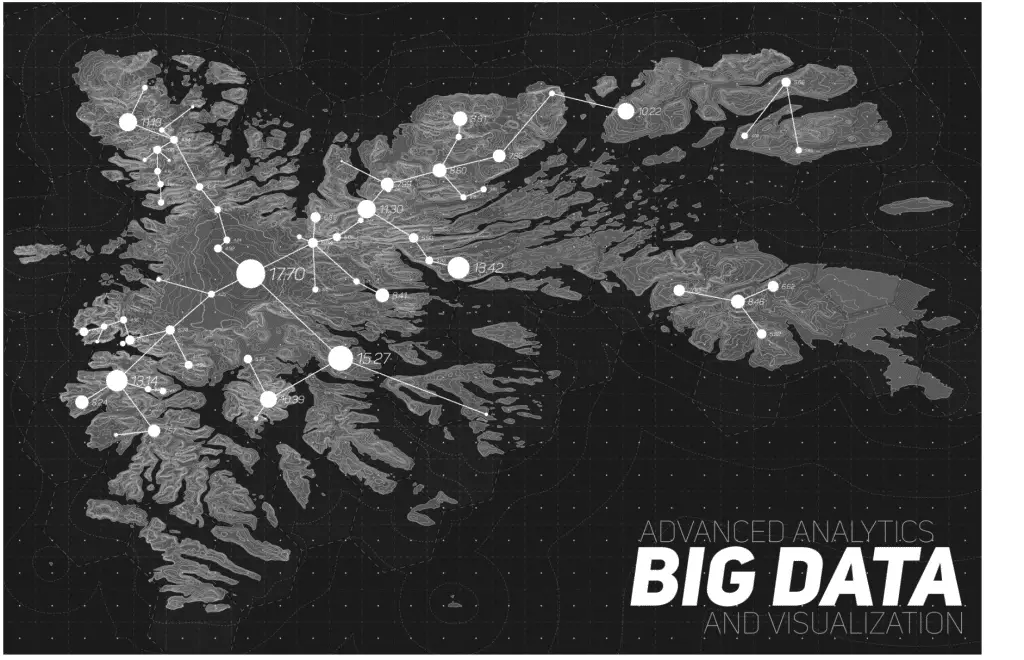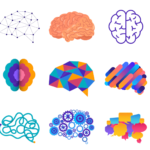
Introduction
Artificial intelligence (AI) technology is transforming how we approach manufacturing, shopping, and policing, to name only three areas. One of the technology’s biggest advantages is its capacity to analyze massive volumes of data faster and more accurately than humans could. Combined with the capability to predict scenarios based on the analyzed data, this ability is now shaping our future for the better. By using AI as a tool for vulnerability mapping, we can prepare for a wide range of challenges ahead.
Table of contents
Crisis Response
Before delving deeper into the benefits of vulnerability mapping, it is worth clarifying the term. A vulnerability map is a map that shows the precise location of sites where properties, people, or our natural environment are at risk from potential threats and hazards. Modern vulnerability maps tend to combine information about climate, socioeconomic data, and biophysical sources.
Although the exact components of the maps vary, many include exposure to a certain threat, sensitivity to that problem, and the capacity to adapt. All three factors have a major influence on the level of the threat being assessed. Vulnerability mapping informs a company’s or a government’s crisis response in a major way.
Companies and government organizations may need to respond to natural disasters, cyberattacks, disease outbreaks, and other incidents. Vulnerability mapping helps identify the most critical issues an organization needs to prepare for. Based on that foundation, the organization can then develop detailed response plans.
Of course, humans are capable of developing crisis response plans. However, AI can augment their work. By analyzing far more data from a wider variety of sources than humans could, computers can model a larger number of outcomes. Human crisis experts then use those scenarios to develop more appropriate responses.
Economic Empowerment
The coronavirus pandemic showed vulnerabilities in the global supply chain that affected almost every industry. Much of the world came to a standstill, including the production and transport of goods. This unprecedented disruption made it clear how connected the global economy is and how these connections can leave companies exposed.
AI allows businesses to take their assessment of vulnerability to a new level by comparing larger volumes of data from a greater variety of sources before modeling scenarios. Technology also enables businesses to monitor supplier networks differently and accelerate their response if a crisis occurs. Global consultancy firms like McKinsey predict that leading manufacturing companies, for example, will use these insights to become more agile and innovative.
Their new approach will help empower their response to any impending crisis, whether it is a pandemic or a long-term recession.
Educational Challenges
A lack of education frequently predisposes individuals to poverty by limiting their access to information and other material or social resources. Without sufficient education, adults struggle to access job opportunities that provide a stable income for their families.
AI-based vulnerability mapping helps expose potential educational challenges on a local or global scale. Based on the risks identified, the software can then provide models and scenarios that help countries overcome educational challenges.
Environmental Challenges
Over the past two decades, the frequency of environmental shocks and disruptions has increased. Earthquakes, tsunamis, and hurricanes have hit countries including the United States more frequently than during the last century.
In 2019 alone, 40 weather-related disasters caused damages above $1 billion each. As the economic toll of environmental disasters escalates, AI technology has two roles to play.
AI-based software can analyze huge amounts of environmental data to recognize trends and predict future disasters. Accurate predictions allow businesses, governments, and individuals to prepare and minimize the impact of those disasters. Machine-learning-based approaches are already being used in the assessment of groundwater vulnerability, for example.
But this technology can do more. Artificial intelligence can model scenarios and strategies that may prevent similar levels of damage. Put simply, AI can tell humans what they need to change to slow down the frequency of disasters.
Equality and Inclusion
Gender equality and inclusion of minorities remain challenges in many countries worldwide. In developing countries, a lack of equality for women is limiting the economic development of entire communities.
In 2021, the United Nations published a research paper on the topic. The publication exposed clear links between gender (in)equality, women’s empowerment, and reducing the risk or impact of natural disasters.
Challenges in this area are not limited to developing countries. Western democracies also struggle to achieve equity and true equality, for example in the workplace or when it comes to access to healthcare. AI-driven analysis can help identify persistent inequalities and develop suggestions to help overcome them.
Applying concepts like the correlation coefficient allows scientists to demonstrate the association between inequality and a lack of opportunity even more strongly.
Health and Hunger
Health inequities and hunger are closely linked to educational and economic challenges. Individuals who persistently struggle with health problems are often unable to join the workforce. In some countries, that limits their access to healthcare and their ability to cover the cost of basic food. Whilst this is disastrous on an individual level, it also has a larger impact on the development potential of entire countries.
Predicting population density and food insecurity is often easier with the help of AI technology. As a second step, AI can then follow up by modeling ways to overcome challenges related to hunger and illness. Artificial intelligence also enables more accurate calculations of measures such as the topographic wetness index. As a result, scientists can make more valid predictions of agricultural production or patterns of vegetation.
Access to clean water is a huge factor in managing health and hunger across the world. Conducting a comparative study of coastal aquifer vulnerability assessments becomes simpler when it is aided by powerful technology designed to recognize and highlight patterns. AI allows scientists to predict community vulnerability better than human analysis can because the technology digests more data in less time.
Also Read: The role of AI in vaccine distribution
Information Verification and Validation
The coronavirus pandemic showed that our society is both vulnerable and susceptible to misinformation and disinformation. As doubt about the seriousness of the pandemic gave way to questions about the efficacy of the new vaccines, millions of people fell victim to conspiracy theories. Many of them chose not to become vaccinated, potentially putting others at risk and making entire societies more vulnerable to new variants of the coronavirus.
AI-driven vulnerability maps can not only show where audiences may be more receptive to “fake news.” They can also highlight the sources of misinformation as a prerequisite to eradicating them. As machine learning algorithms become more efficient at verifying information, they identify new threats without human involvement.
To achieve this, AI and machine learning use different techniques of classification to distinguish between a threat and correct information. One of these techniques is known as random forest. The name may sound quaint, but the approach is powerful. A random forest analysis allows the algorithm to examine multiple decision trees and arrive at a single result.
In the case of information verification and validation, this would mean examining and cross-referencing multiple data sources quickly to decide what is valid. It is one of the tools scientists use to eliminate or at least minimize a system’s vulnerabilities.
Infrastructure Management
Infrastructure management allows organizations to streamline their IT processes, policies, equipment, human resources, and data for greater efficiency. AI technology excels at reducing duplicate efforts and enhancing the unhindered flow of information across an organization.
Computers will find it easier than humans to recognize areas where processes can be simplified, and AI enables machines not only to propose improvements. In addition, the models can also predict the impact of the proposed changes, making it clear how much an organization stands to gain.
Public and Social-Sector Management
Leveraging new technologies is not reserved for private sector companies. The same digital technologies and analytics can benefit organizations in the public and social sectors. Arguably, they may even be more important in these areas as they stand to benefit a larger part of our society. This sector often faces more budgetary constraints than private organizations, making it more important to use data efficiently and predict population density, among other factors.
Once again, AI technology comes into its own because of its ability to digest larger amounts of data more precisely than humans can. AI-based software quickly highlights weak points in public and social services and models their consequences.
Security and Justice
Artificial intelligence technology has the potential to make huge contributions to national security systems. Government bodies like the Department of Homeland Security are utilizing AI to identify threats and eliminate them before they become robust physical world attacks.
Right now, the Department of Defense is investing billions of dollars into the integration of AI into national intelligence and national security. According to the U.S. Government Accountability Office (GAO), potential applications range from relatively simple process automation to the deployment of fully autonomous warships. Whilst the former is a reality already, autonomous warships are still a thing of the future.
Also Read: AI and Cybersecurity
Digital Landscape
AI is changing the world’s digital landscape and the way we think about digital technology. In the past, any mention of artificial intelligence may have conjured up images of robots running our day-to-day lives. But as technology is becoming a normal part of everyday life, all of us are operating within a digital landscape. This landscape is created by the hardware, software, and content we interact with.
Part of our digital landscape is already being shaped by AI – just think of product or content suggestions based on previous purchases. Whilst these influences make our lives more convenient, they can also open us up to threats including misinformation. Assessing vulnerability and deploying AI in a way to fight these threats helps maintain a healthier digital environment.
Cybersecurity Threats
The digital transformation of our personal lives and our workplaces has made our society more vulnerable to cybersecurity threats. Companies and individuals rely on cloud-based data storage and trust their service providers to prevent malicious attacks.
Traditional cybersecurity relies on programming and updating software with known threats. That means there is limited protection against digital attacks originating from new threats. Artificial intelligence improves this approach not only by recognizing and mapping vulnerabilities more accurately. In addition, technologies such as deep learning allow algorithms to follow an independent learning process, without human input. As a result, the algorithm predicts new threats, limiting their potential to cause lasting damage.
Also Read: Artificial Intelligence + Automation — future of cybersecurity.
Conclusion
Artificial intelligence is not the only technology used to improve vulnerability mapping. In fact, its results can be enhanced even further by being combined with frameworks such as Pinch analysis. As an adjunct to human analysis & opinions, AI has the benefit of relying on data and approaching vulnerability mapping without emotion. The technology has the potential to transform vulnerability mapping for individuals, businesses, and governments.
Also Read: Which Companies Use Drone Delivery?
References
“Crisis Response.” McKinsey & Company, https://www.mckinsey.com/capabilities/risk-and-resilience/how-we-help-clients/crisis-response. Accessed 15 Feb. 2023.
“Cybersecurity Trends: Looking over the Horizon.” McKinsey & Company, 10 Mar. 2022, https://www.mckinsey.com/capabilities/risk-and-resilience/our-insights/cybersecurity/cybersecurity-trends-looking-over-the-horizon. Accessed 15 Feb. 2023.
Office, U. S. Government Accountability. “How Artificial Intelligence Is Transforming National Security.” U.S. GAO, https://www.gao.gov/blog/how-artificial-intelligence-transforming-national-security. Accessed 15 Feb. 2023.
“Public & Social Sector.” McKinsey & Company, https://www.mckinsey.com/industries/public-and-social-sector/our-insights. Accessed 15 Feb. 2023.
“Risk, Resilience, and Rebalancing in Global Value Chains.” McKinsey & Company, https://www.mckinsey.com/capabilities/operations/our-insights/risk-resilience-and-rebalancing-in-global-value-chains. Accessed 15 Feb. 2023.
“—.” McKinsey & Company, https://www.mckinsey.com/capabilities/operations/our-insights/risk-resilience-and-rebalancing-in-global-value-chains. Accessed 15 Feb. 2023.
ShieldSquare Captcha. https://iopscience.iop.org/article/10.1088/1748-9326/ac10e0. Accessed 15 Feb. 2023.
Technology, IBM. “Artificial Intelligence for Smarter Cybersecurity.” YouTube, Video, 9 June 2021, https://www.youtube.com/watch?v=rH9-m7AhJhk. Accessed 15 Feb. 2023.
“What Is Random Forest?” IBM, https://www.ibm.com/cloud/learn/random-forest. Accessed 15 Feb. 2023.











